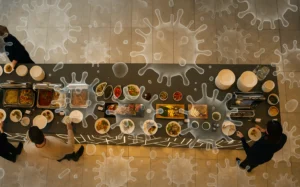The call to halt mirror life research has leapt from laboratories to headlines, casting mirror microbes as a civilization-scale hazard that must be preempted now; the wiser move is to distinguish concrete risks from speculative ones and to regulate endpoints, not the entire field. A precise, risk-aware approach can reduce danger while preserving the medical and scientific benefits of chirality research that are already improving therapeutics.
What mirror life means
Mirror life refers to organisms whose building blocks are the opposite handedness of life on Earth—right-handed amino acids and left-handed nucleic acids instead of the usual forms. Because biology is exquisitely sensitive to molecular handedness, mirror systems would be hard for natural enzymes and immune systems to recognize, which is both their promise in medicine and the core of the hazard if whole organisms were ever created.
The case for a pause
Proponents of a pause argue that mirror bacteria could evade immune responses, disrupt ecosystems, and threaten agriculture and public health. This position emphasizes second-order harms—ecological cascades and food system shocks—rather than only direct infections, which reasonably raises the bar for caution.
The contrarian view
The credible critique is not that risks are imaginary, but that timelines and feasibility are often overstated: assembling a self-replicating mirror organism requires coordinated advances in long mirror nucleic acids, functional mirror enzymes, and mirror cellular machinery. Current advances in mirror peptides and durability-enhanced molecules are far from whole mirror cells, and conflating these with near-term organism creation leads to blunt policy that misses the mark.
Governance over prohibition
Targeted controls outperform blanket bans: prohibit explicit goals to create mirror cells or bacteria while allowing medically oriented mirror-molecule research under licensing, registration, and audit. This surgical approach keeps high-risk endpoints off-limits, preserves visibility through reporting and oversight, and avoids chilling beneficial work that does not materially advance organismal construction.
Why a total halt can backfire
Pure prohibition often pushes activity offshore or underground, decreasing transparency and weakening safety culture. If adjacent fields continue enabling capabilities, society needs technically literate regulators and monitored programs—not information vacuums—to recognize thresholds, detect misuse, and respond early. Meanwhile, stalling mirror therapeutics risks delaying drugs designed to resist degradation and extend efficacy, a near-term public good.
Prudent policy, now
- Prohibit funding, publication, and prizes for end-to-end mirror cell or mirror bacterium construction, with clear definitions and red lines tied to capability milestones and intent.
- Require registration, third-party review, and containment standards for scaling mirror nucleic acids and enzymes beyond defined thresholds to track risk-relevant progress without banning foundational science.
- Establish international transparency norms: public registries of projects, funder commitments, incident reporting, and periodic governance reviews to update red lines as the science evolves.
- Create a whitelist pathway for mirror therapeutics research with GMP-level biosafety, audit trails, and disclosure requirements that reflect a distinct risk-benefit calculus.
Bottom line
Mirror bacteria represent an exceptional hazard class, but equating that hazard with today’s mirror-molecule work invites blunt bans that reduce safety more than risk. The right move is layered governance: a hard stop on organismal endpoints, tight oversight on enabling thresholds, and open international processes that maintain visibility while advancing safe, beneficial chirality research.
Last Updated on October 18, 2025 by Lucy




